Asus ROG Zephyrus G16 review: goes beyond gaming
Extreme power, extremely good looking
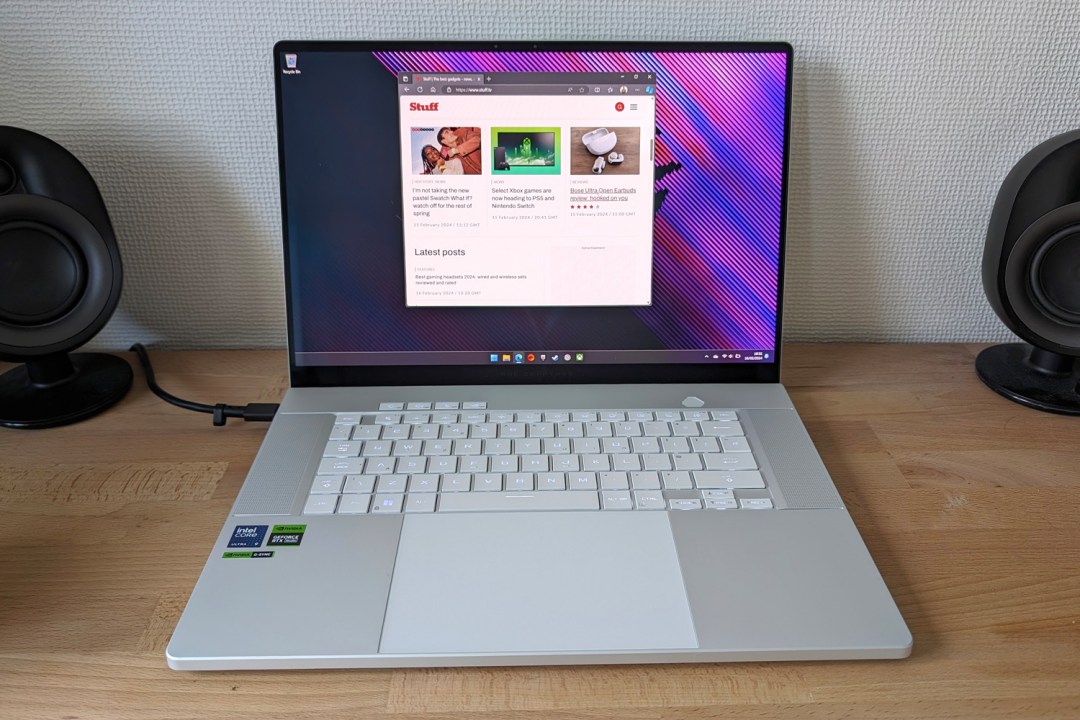
Stuff Verdict
Part uncompromising gaming laptop, part portable creative powerhouse. The Asus ROG Zephyrus G16 is a superb (and superbly expensive) machine that is up there with Apple MacBooks for slick construction
Pros
- Top-tier gaming and desktop performance
- Outstanding OLED display
- Thin, light and with impeccable build quality
Cons
- Monstrously expensive in top spec
- Keyboard backlight hard to read on silver model
Introduction
Asus has been on something of a hot streak when it comes to gaming laptops with mainstream appeal. Last year’s Zephyrus G14 was a portable powerhouse at sensible money, and its bigger brother added even more grunt without going overboard on the styling front. The 2024 Asus ROG Zephyrus G16 goes even further, with a slick new design that might actually rival Apple’s MacBook Pro.
Naturally it still packs in more firepower than an F35 fighter jet, courtesy of an Intel Meteor Lake CPU and Nvidia RTX dedicated graphics. AI smarts and studio-certified drivers give it real creator appeal. Add in a first of it’s kind gaming-grade OLED display and this might just be the most lustworthy laptop I’ve tested to date.
But then you’d hope so, given a fully-loaded example will set you back the same as an M3 Max-equipped MacBook Pro 16in. Is there enough here to win over more than just hardcore gamers?
How we test laptops
Every laptop reviewed on Stuff is tested using industry-standard benchmarks and apps to assess performance and battery life. We use our years of experience to judge display, sound and general usability. Manufacturers have no visibility on reviews before they appear online, and we never accept payment to feature products.
Find out more about how we test and rate products.
Review originally published 19 February 2024
Design & build: grown-up gamer
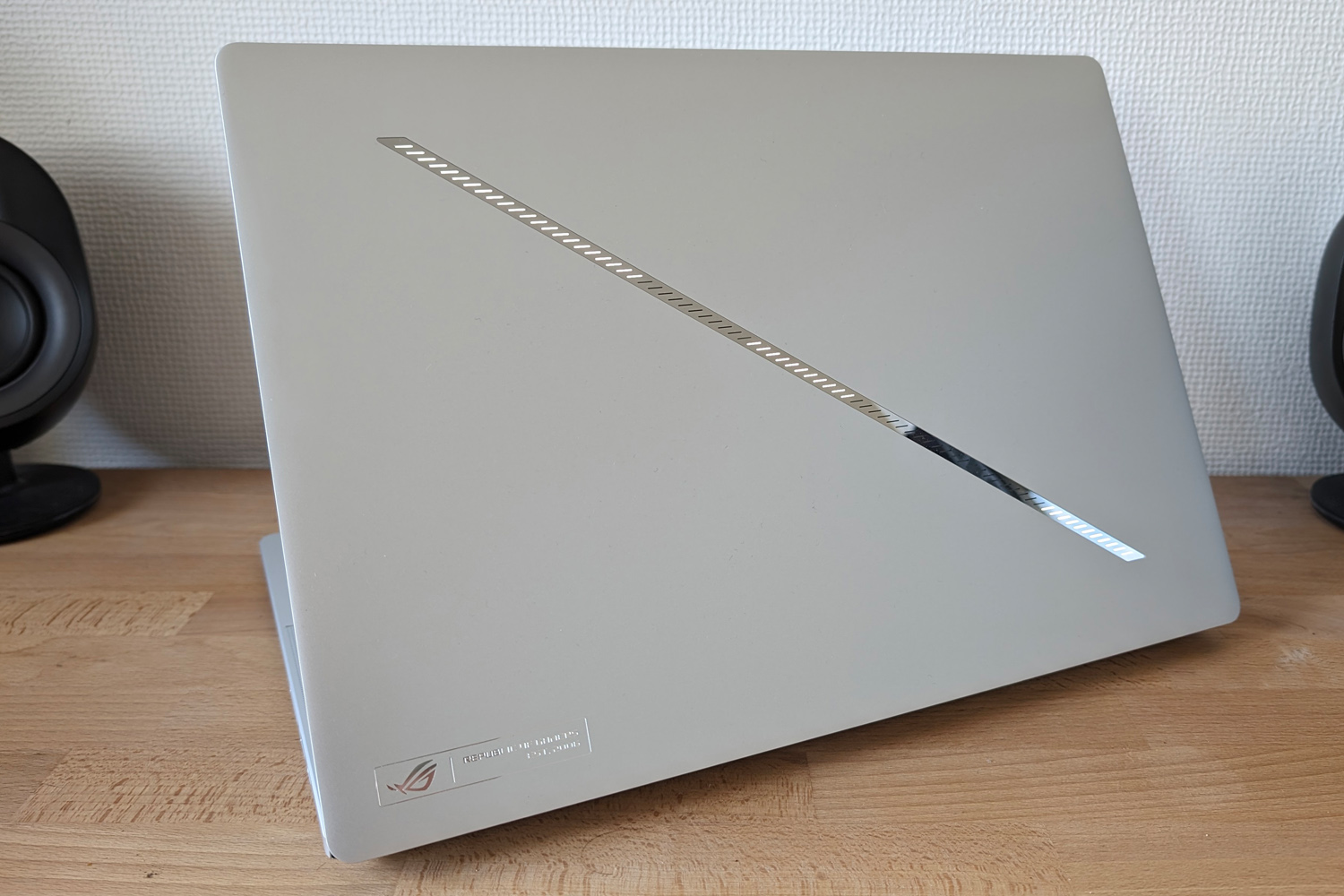
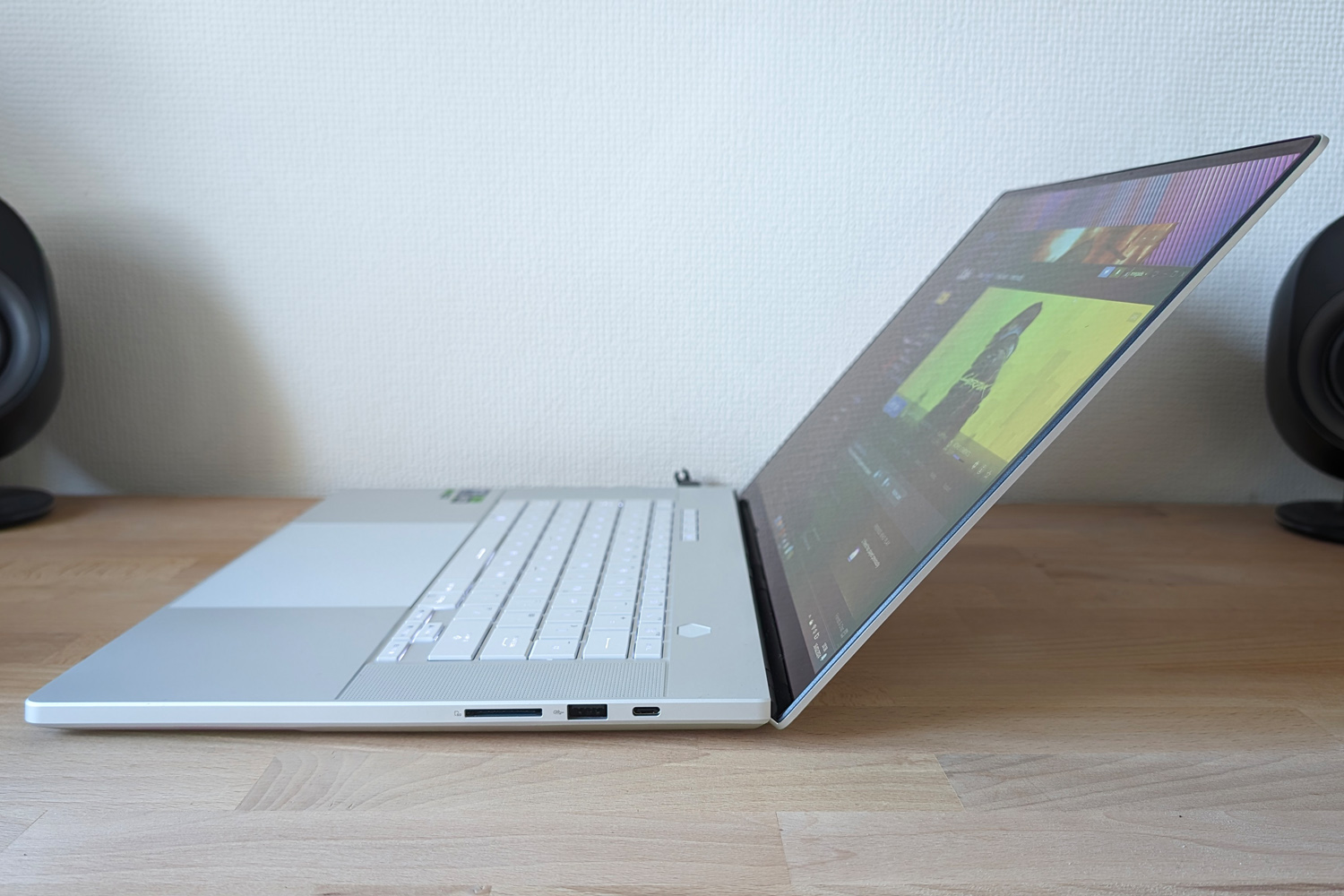
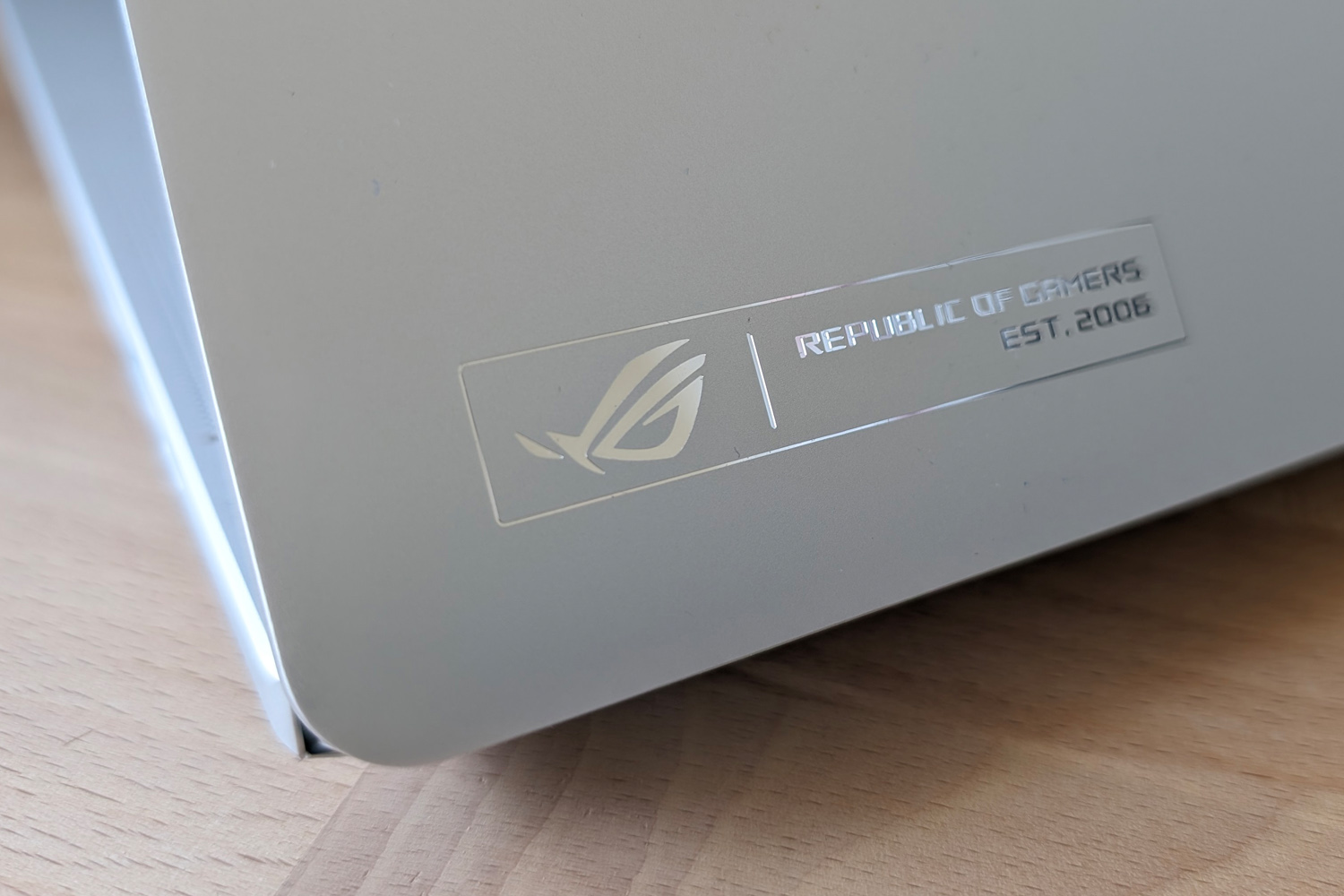
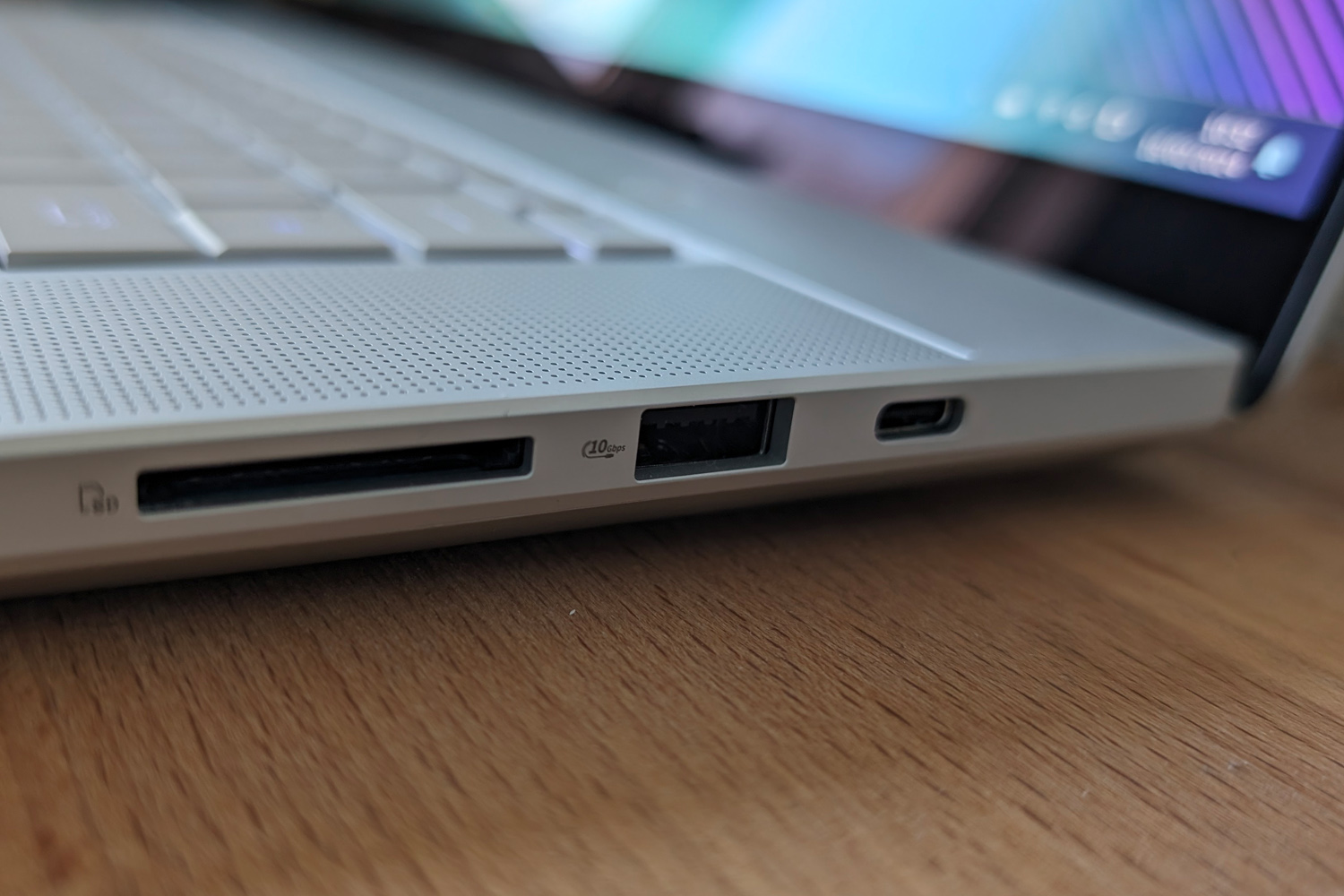
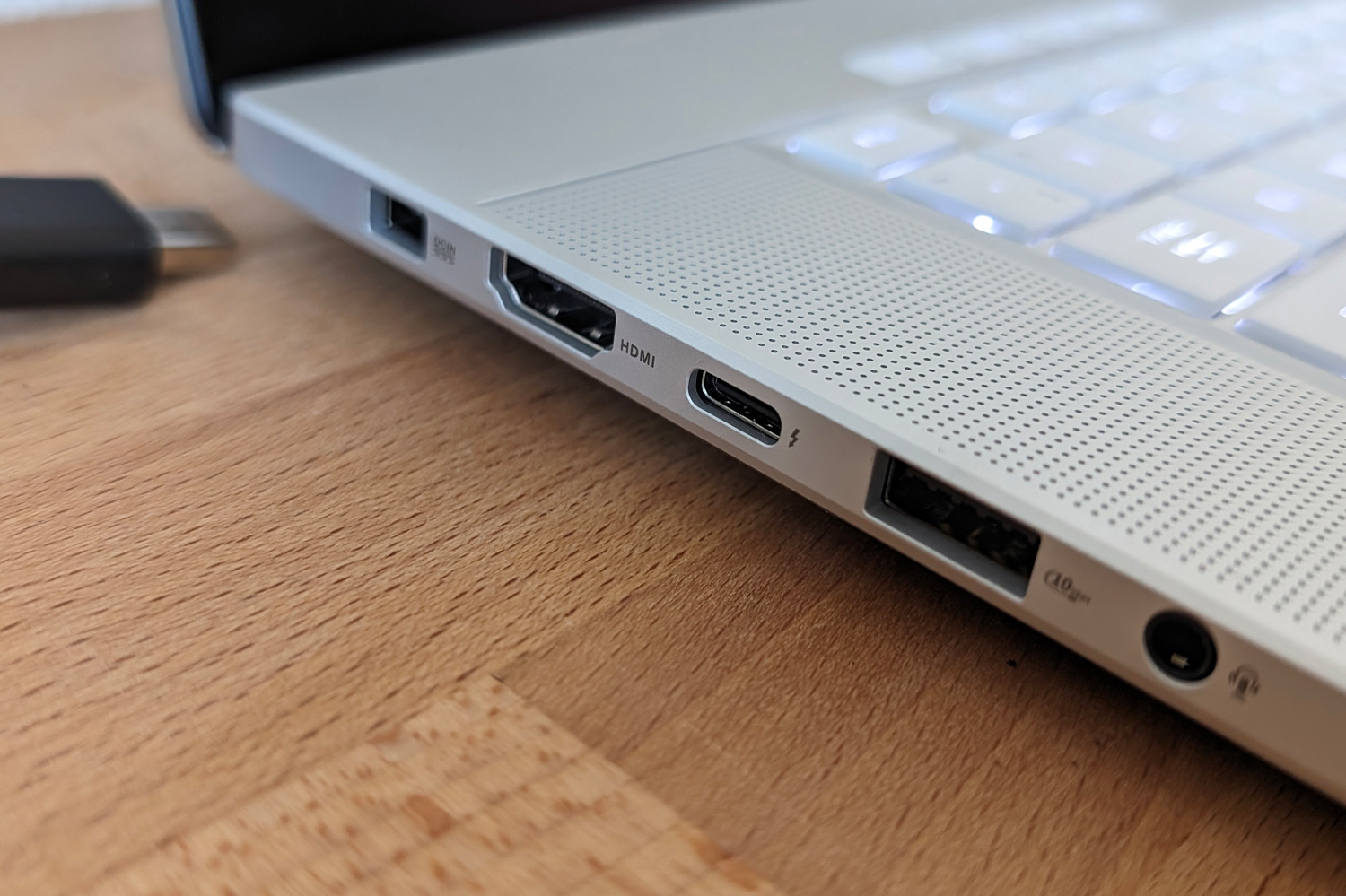
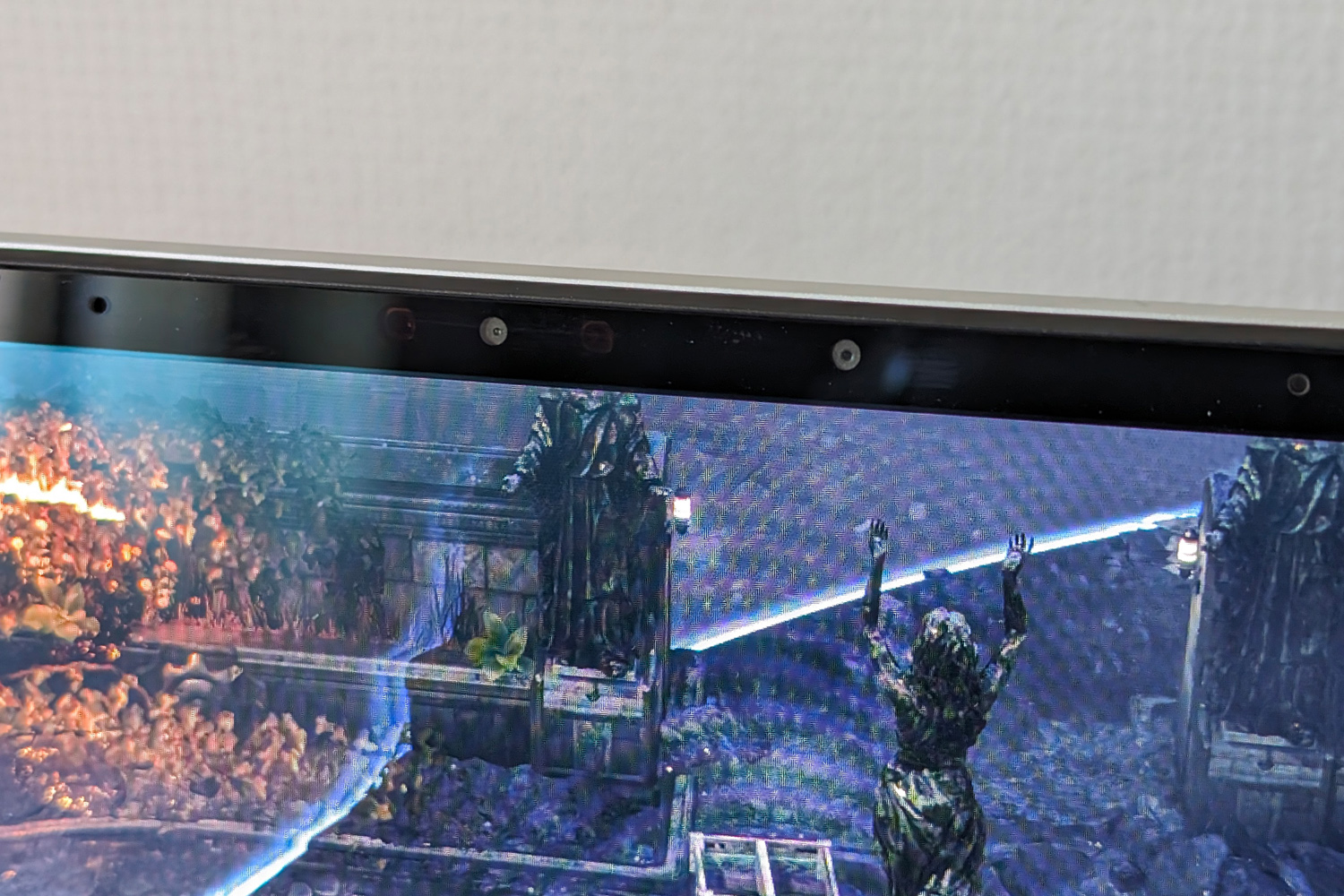
This year’s Zephyrus G16 is a complete contrast from the previous generation. Polycarbonate plastic is out in favour of aluminium, dimensions have shrunk in almost every direction, and the branding is about as subtle as it gets for a gaming laptop. All of the ventilation holes (of which there are plenty) are well hidden on the underside, and at the rear by the screen hinge.
At 1.95kg (less if you go for a model with an RTX 4070 or lower), you couldn’t call this especially portly. Even with the power brick I had no complaints slinging it in a backpack. It’s just14.9mm at its thinnest point, and only bulges to 17.4mm at its thickest; I’d say it’s every bit as easy on the eye as a MacBook Pro or Dell XPS.
Even the head-turning ‘slash’ LED light strip built into the lid is on the subtle side. It’s nowhere near as in-yer-face as the AniMe matrix display found on older generation G16s, but is still brilliantly customisable, with 28 white mini-LEDs split across seven zones. I thought it looked especially striking on my Platinum White review unit. Asus will also sell you an Eclipse Grey model, which based on a short demo isn’t nearly as good as deflecting fingerprint smudges. It does have a few issues of its own, though – see the keyboard section further down.
Asus hasn’t skimped on connectivity in order to keep dimensions in check. There’s an HDMI 2.1 port, full-size SD card reader, 3.5mm combo audio port, two USB 3.2 type-As, a USB 3.2 Type C, and a single Thunderbolt 4 port. The latter two also handle DisplayPort video output and power delivery.
There’s also a bespoke charging port, which Asus is gradually rolling out across its range of high-powered laptops. It’s reversible, just like USB-C, but is more power efficient and creates less heat at the wattages demanded by Nvidia’s top-tier mobile GPUs. It also means you don’t give up any connectivity while plugged in. A second, smaller USB-C power brick included in the box is useful for travel, when you know you’re not going to be gaming.
The only thing missing is an Ethernet port, so you’ll need an adaptor for wired networking.
Screen & sound: the OLED advantage
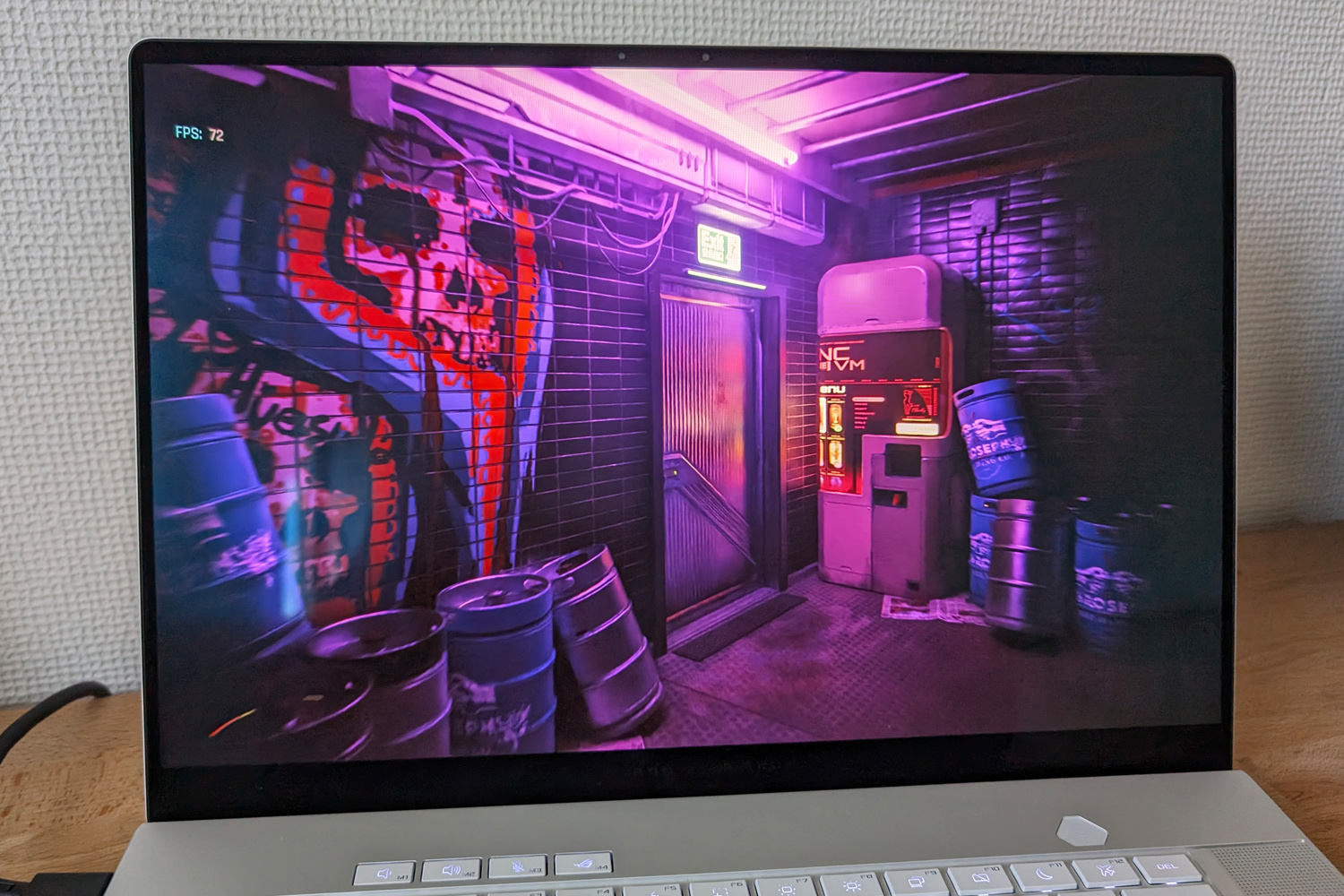
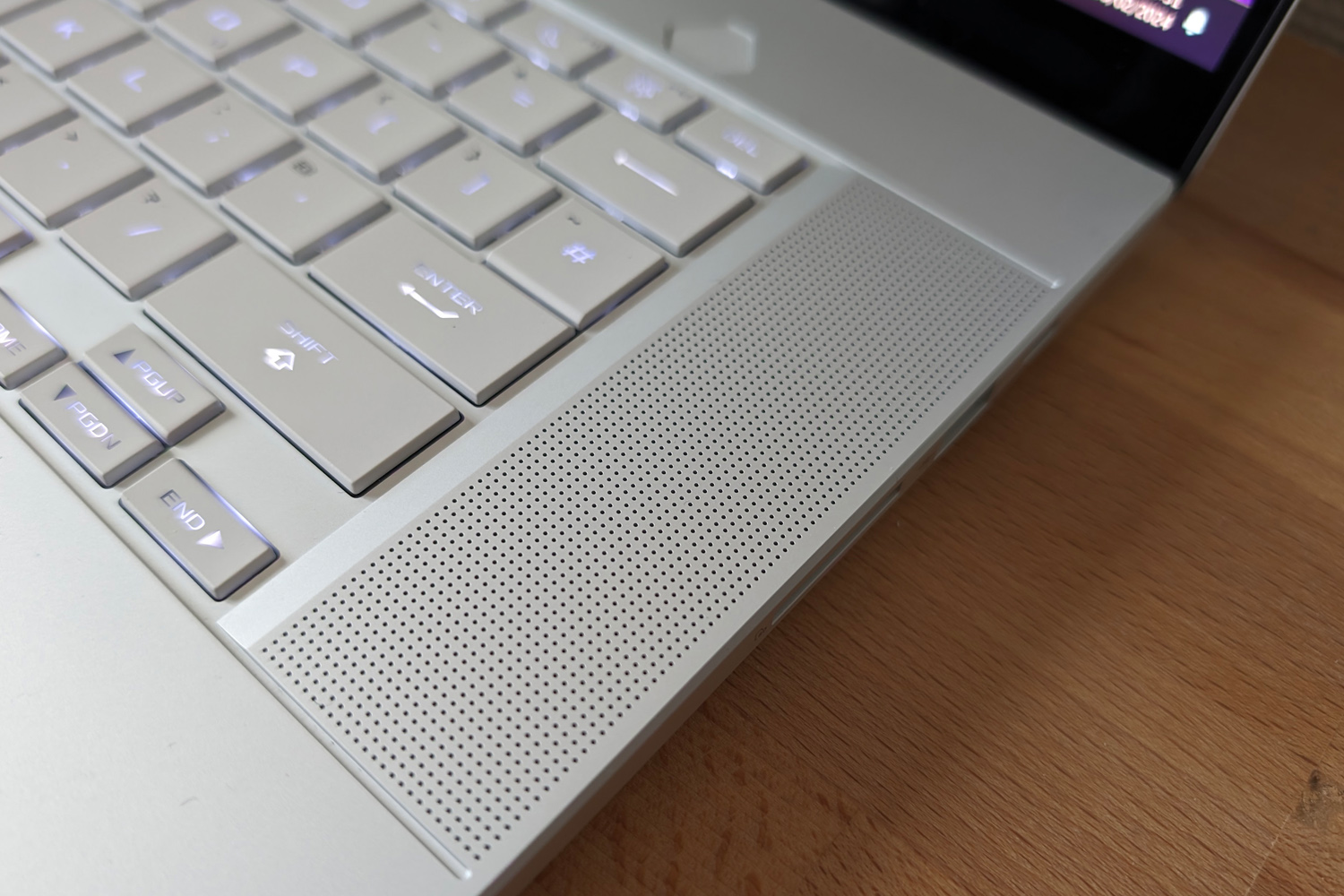
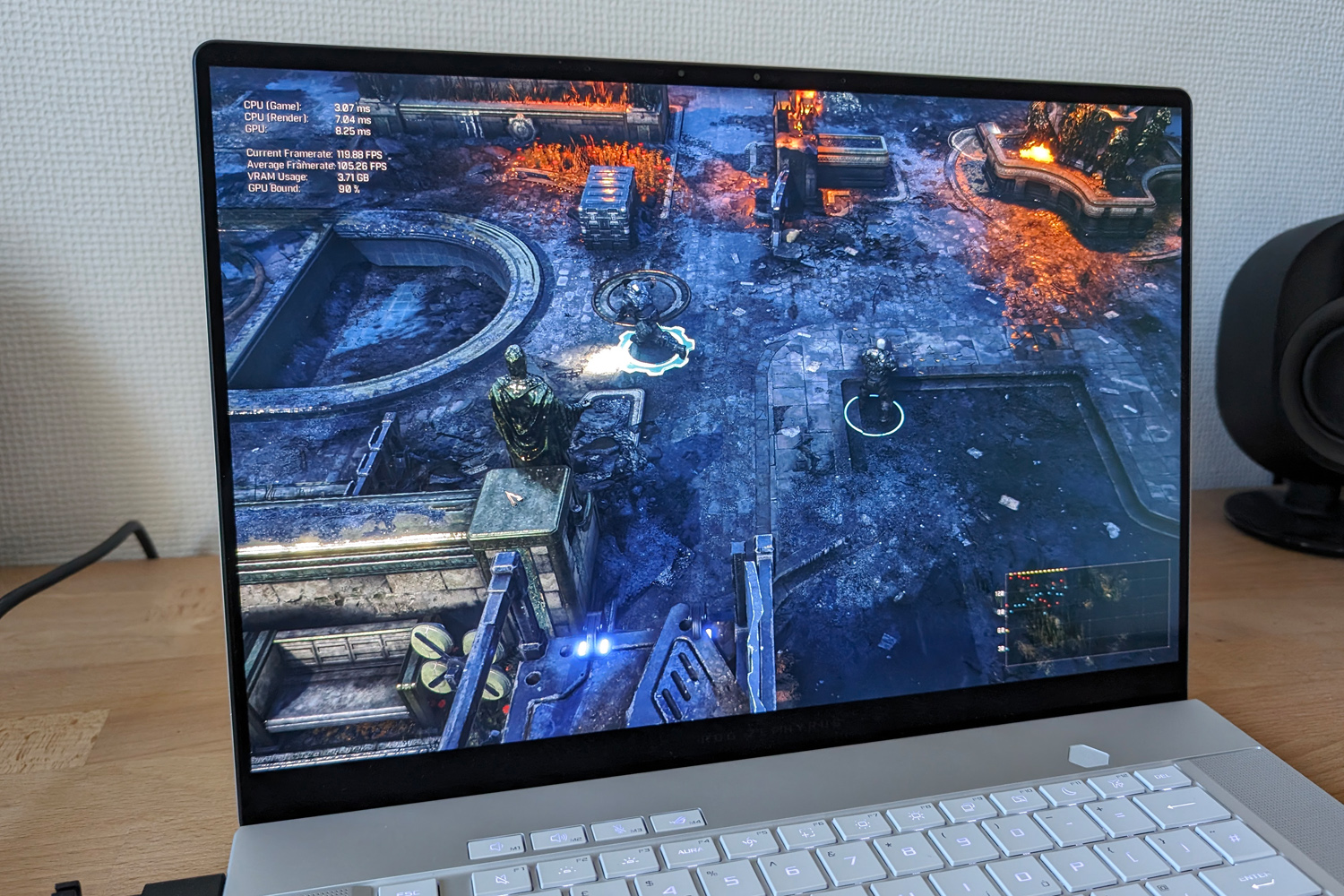
Until I unboxed the ROG Zephyrus G16 I thought the Razer Blade 16‘s clever dual-resolution mini-LED panel was peak gaming laptop display. This Asus firmly pushes that into second place. You might ‘only’ be getting a 2560×1600 resolution here instead of 4K, but OLED tech means it leaps ahead for contrast and colour vibrancy.
In fact, colours are a bit too vivid out of the box; it works great for games, but a Display P3 profile in Asus’ software suite is a better choice for creative work. Otherwise black levels are basically infinite, gradation is excellent, and HDR content looks stunning (even if Windows’ HDR implementation is still far from perfect. Games, films and still images are wonderfully detailed, despite not being able to show UHD content at its native clarity.
Brightness can be a challenge for some OLED panels, but I thought the Zephyrus G16 coped just fine here. I could use it easily enough for working and web browsing on sunny days, although games definitely looked their best in darker environments.
This is the first 16in OLED to get Nvidia’s G-Sync adaptive refresh rate tech, ensuring screen tearing is all but eliminated. It makes demanding games feel gloriously smooth, even with ray tracing effects enabled. Esports fans will also appreciate the 240Hz maximum refresh rate, which combined with OLED tech makes for near instant response times. Only professional gamers will demand more. For most players, this is as good as gaming laptop screens get.
Asus has also delivered on the audio front. The G16 is packing two tweeters and four woofer speakers, which are easily up there with the latest MacBook Pro for clarity and volume. For such a slim chassis, it’s really quite impressive – with enough oomph I could game without instantly reaching for a pair of headphones.
Keyboard & touchpad: just my type
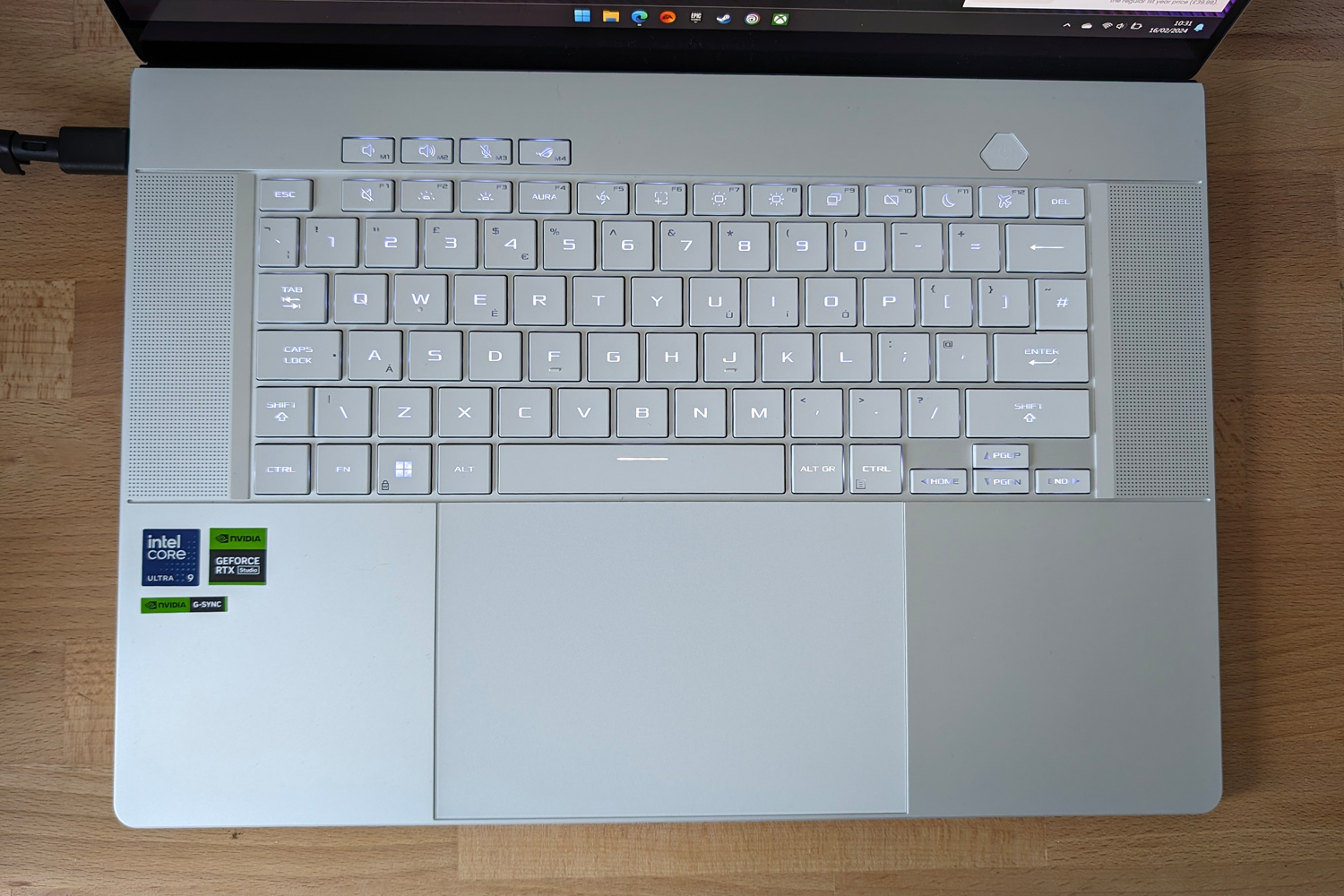
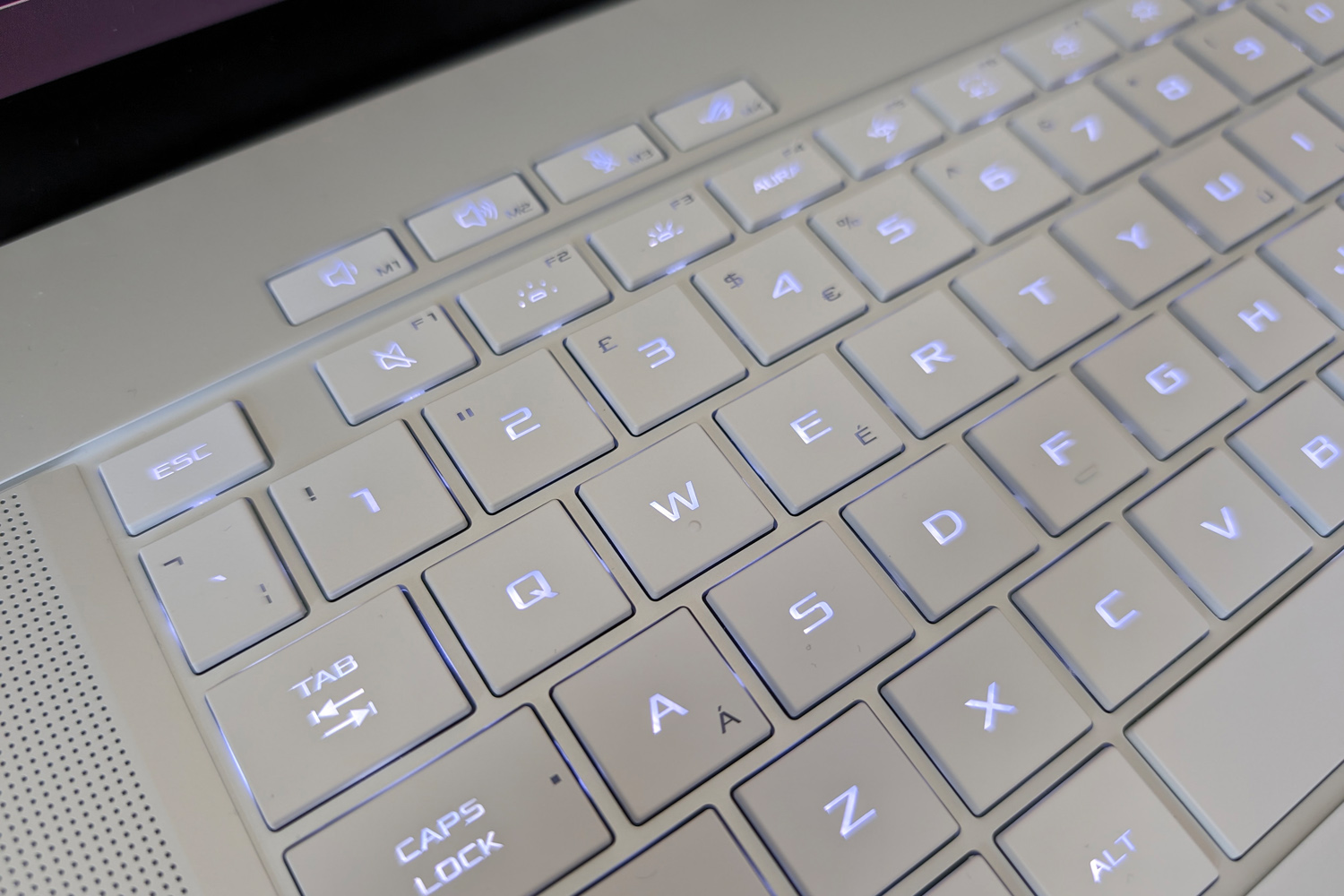
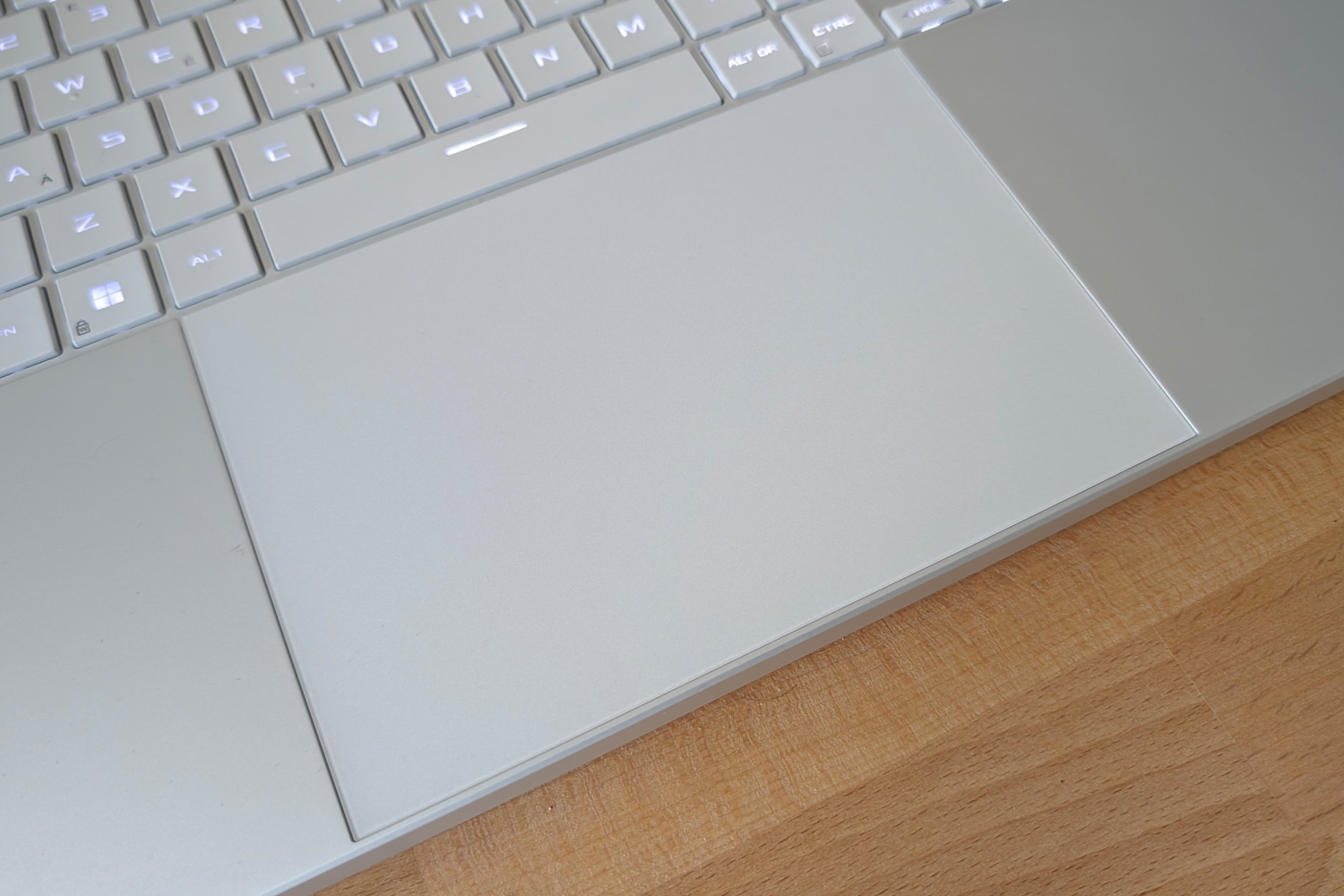
My biggest gripe with the Asus ROG Zephyrus G16’s keyboard? The white LED backlighting made it tricky to read the letters on my silver review unit, unless I was in a dimly lit environment. I opted to turn it off during the day, missing out on the customisable flashing effects, for better legibility. The Eclipse Grey model doesn’t have this problem. You also miss out on RGB illumination, which is exclusive to the smaller Zephyrus G14 this generation.
The island-style keys themselves are perfectly pleasant to type on, with a generous amount of travel and a satisfyingly bouncy action. Everything is full-size bar the arrow and function keys. Asus has also sensibly isolated the power button, so it’s impossible to knock accidentally while typing. The scattering of multimedia keys above the function row are useful, too.
Even when bashing each key at full force, the keyboard tray barely moved. It’s a testament to the rigidity brought by an aluminium frame, and screams ‘premium’ compared to cheaper-feeling rivals with polycarbonate chassis.
I found the expansive glass touchpad was superb for daily duties, being smooth enough for friction-free fingering and accurately detecting multi-touch gestures. I did brush it accidentally while gaming a few times, which registered an unwanted left click or mouse move, so opted to disable it with the keyboard shortcut whenever I plugged in a mouse.
Performance & battery life: don’t sweat it
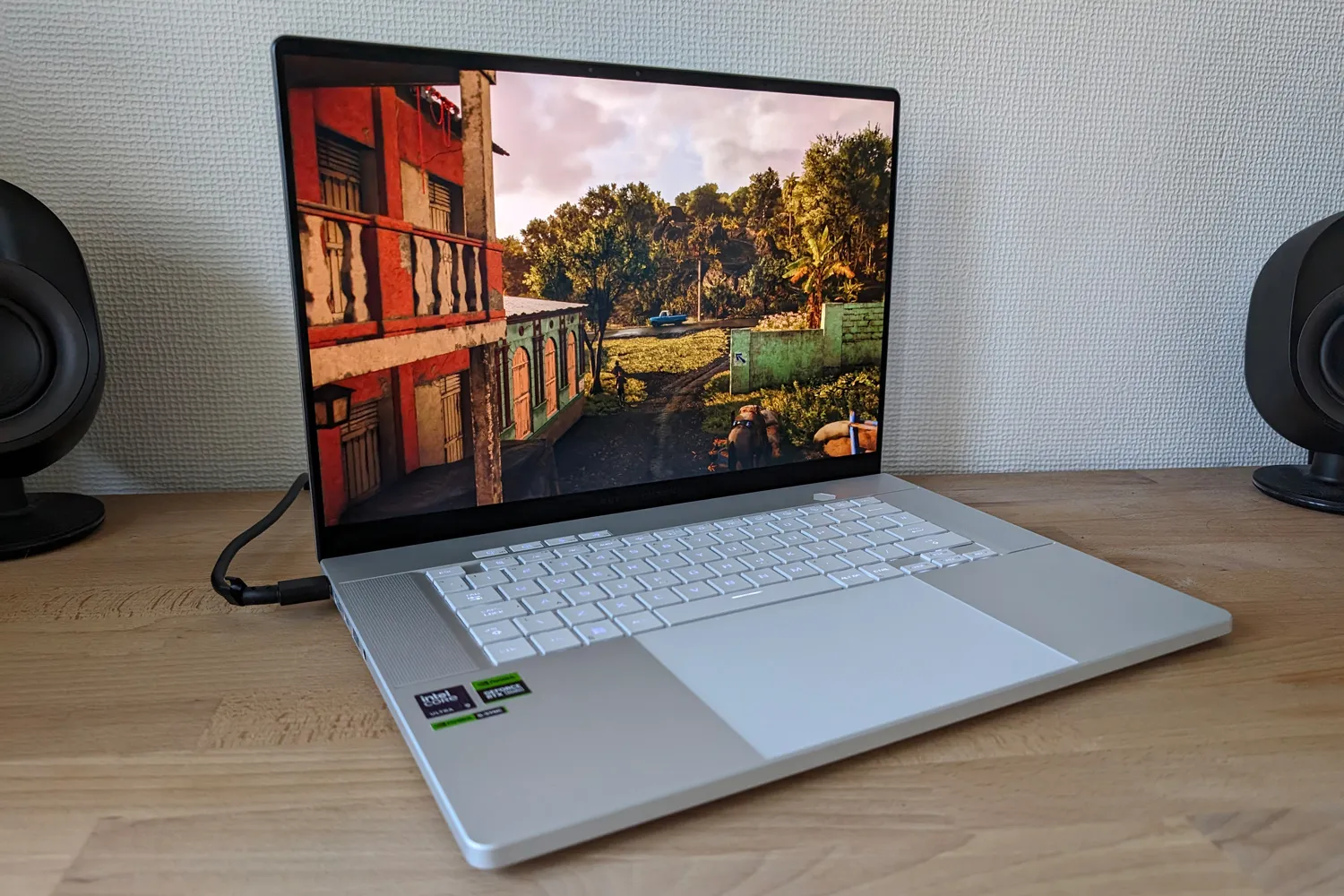
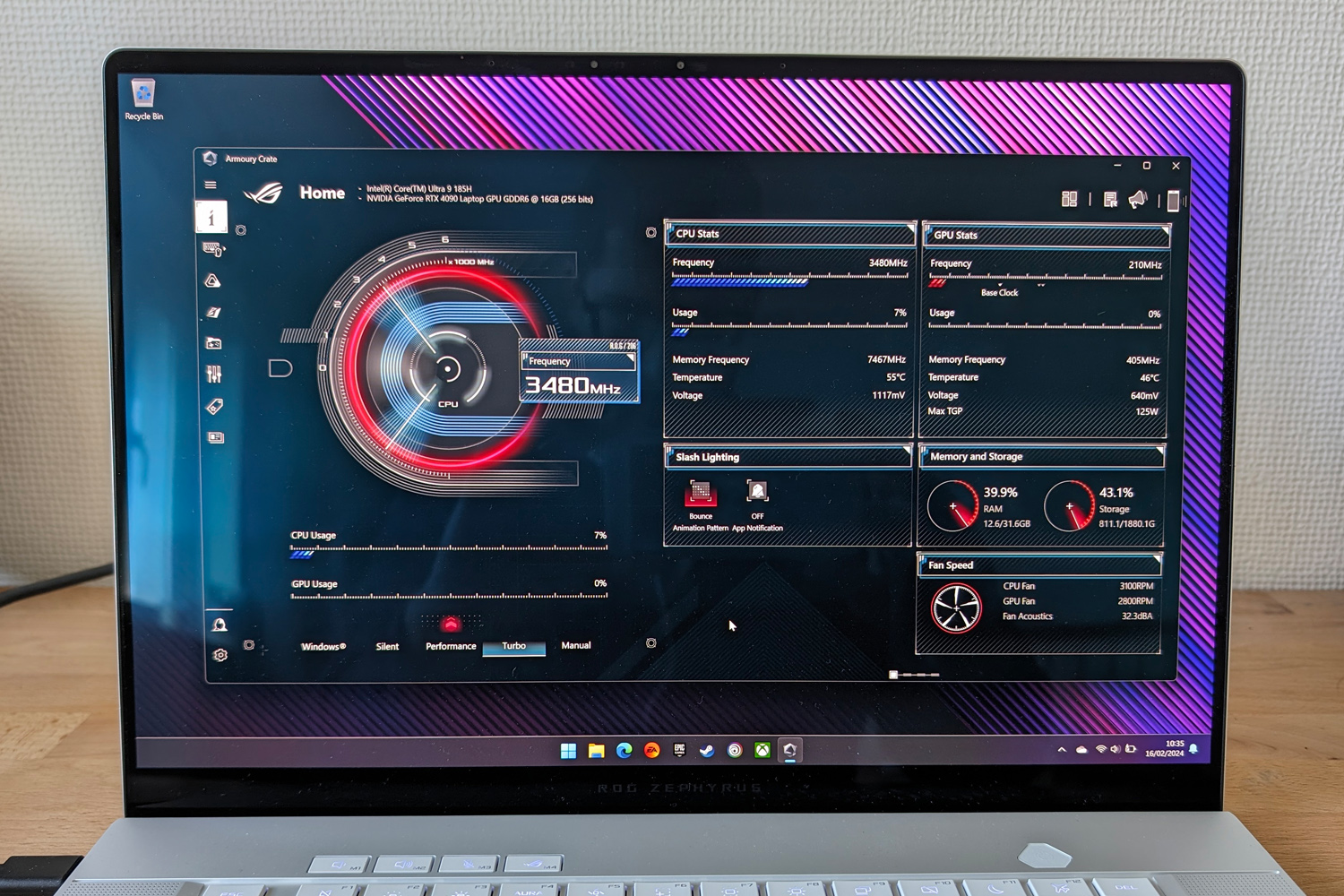
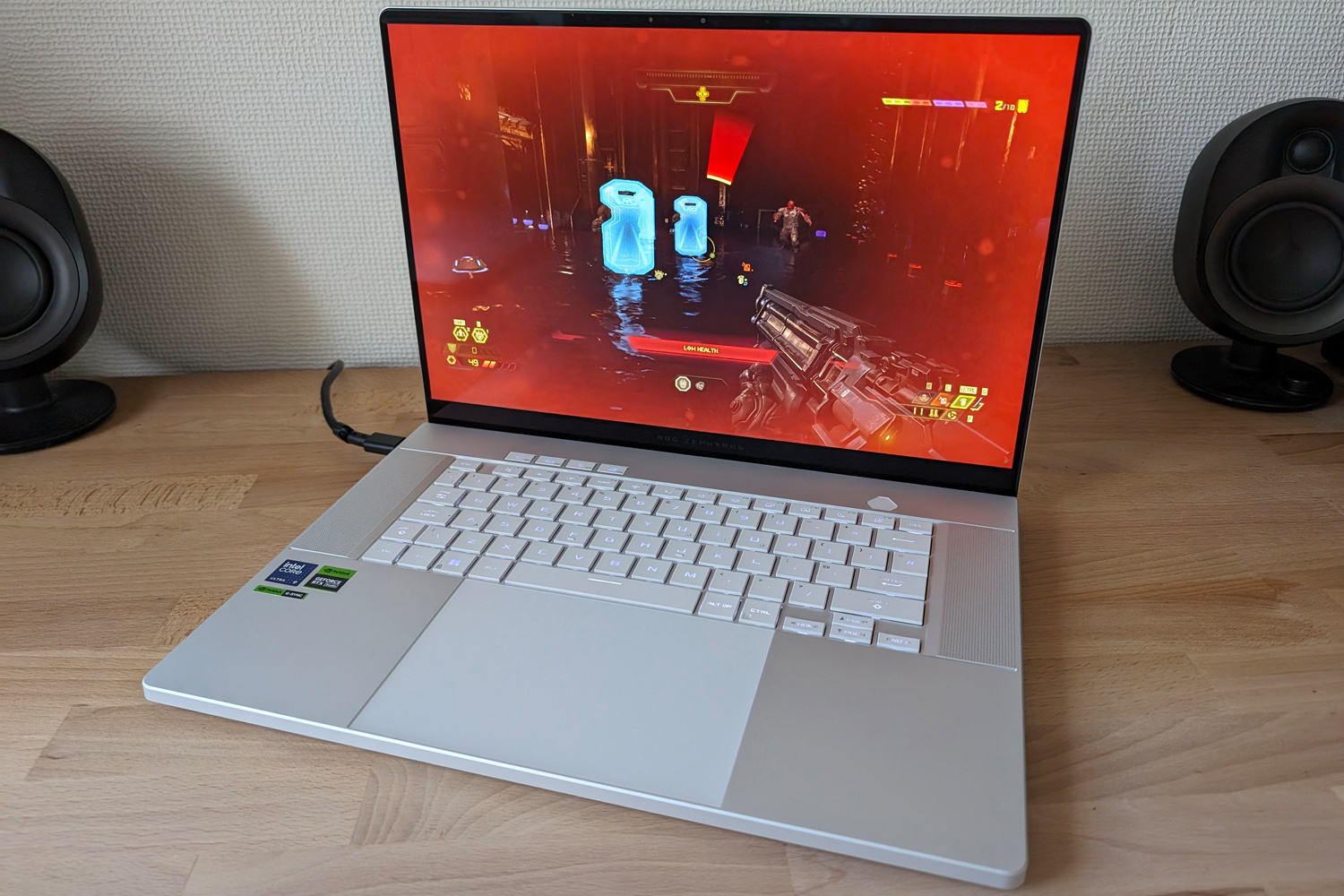
Unlike the Zephyrus G14, which remains AMD-powered for its 2024 iteration, the G16 has Intel inside. The Core Ultra 9 185H chip inside my review unit is as juicy as Meteor Lake silicon gets right now, with 16 cores and 22 threads peaking at a heady 5.1GHz. It’s paired with 32GB of RAM and 2TB of NVMe SSD storage.
The combo is enough to demolish any day-to-day desktop task you’d care to name. The G16 flew through batches of images in Photoshop, barely shrugged when faced with a screen full of Chrome tabs, and charts near the top of synthetic benchmark leaderboards for Windows-powered laptops. Meteor Lake also brings AI smarts into the mix with dedicated NPU cores, although right now there are only a few uses for them, such as background blurring on video calls.
Short of broadcast-grade 3D rendering, there’s little the G16 won’t be able to cope with – and even then it’ll do better than most Windows machines this slim and light.
Gaming is of course where the real action is. This is an ROG laptop, after all. Certain markets can opt for RTX 4070 or RTX 4080 GPUs, but my sample had a top-tier Nvidia GeForce RTX 4090, complete with 16GB of dedicated video memory. Asus has had to dial thermal limits back a bit, meaning 115W peak output instead of the 150W it can manage in larger, thicker laptops with more effective cooling. A twin fan and vapour chamber setup stop it from sounding like a vacuum cleaner when running at full pelt, though.
I played a range of games, with every one of them able to run at maximum detail settings. With ultra-demanding path tracing enabled, Cyberpunk 2077 averaged 59fps at QHD resolution once Nvidia’s DLSS upscaling was lending a helping hand; it felt perfectly playable thanks to G-Sync. Far Cry 6 managed 76fps on maximum settings at native resolution. Doom Eternal was almost always over the 100fps mark on Ultra Nightmare settings, and the Dead Space remake was as beautiful as it was horrifying, with a consistently smooth frame rate. Avoid ray tracing and many newer titles can run at the screen’s native resolution, without DLSS.
The G16 definitely does leave some potential performance on the table because of its power profile and cooling abilities, even when using the Turbo performance preset. I’d be very interested in how well an RTX 4070 equipped version performs, although those forego vapour chamber cooling for an extra (and apparently loud) fan). I still think speccing a 4090 here is worth the trade-off, given the G16 is so much slimmer and more portable than the 18in behemoths that can run the chip at full pelt.
Unlike those rivals, the Asus has battery life on its side. A MUX switch disables the dedicated GPU when away from the mains, meaning I saw over six hours from a single charge when sticking to basic desktop tasks. I’d still be wary of leaving the house without one of the power bricks if I was planning to be working on it all day, but to nowhere near the extend I would with a gaming laptop from even a year or two ago. Gaming is still going to sap battery faster than you can blink, though.
Asus ROG Zephyrus G16 verdict
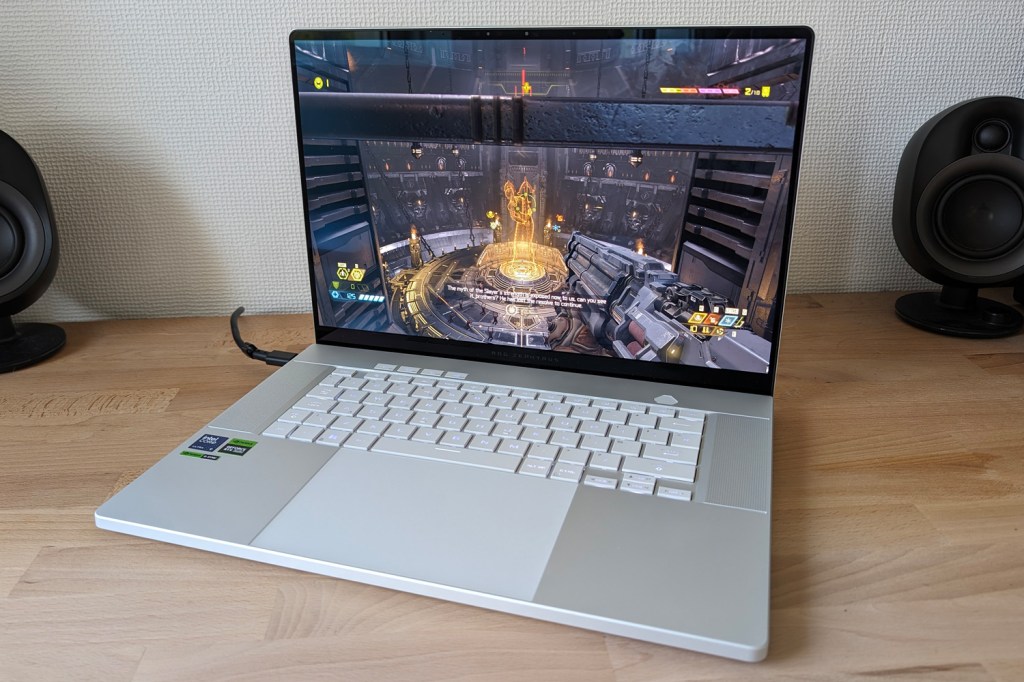
If OLED screens are the latest gaming laptop battleground, then Asus has landed a powerful first strike. The ROG Zephyrus G16’s sensible panel resolution doesn’t demand the GPU work overtime like a 4K screen will, yet looks absolutely stunning in motion thanks to a 240Hz refresh rate.
The new chassis is fantastically thin and light, with the sort of materials I’d expect from a MacBook Pro rival, rather than a gaming machine. I think the silver model’s keyboard and backlight combo could be more legible, but otherwise there’s very little worth griping over. The slash LED on the lid is especially easy on the eye, too.
I’d like to see how it stacks up to Razer’s 2024 Blade 16, which also gets a 240Hz OLED screen, and think an RTX 4070 is perhaps a better choice for such a slim chassis. But as someone who games at home and travels for work, this is all the laptop I could ever need.
Stuff Says…
Part uncompromising gaming laptop, part portable creative powerhouse. The Asus ROG Zephyrus G16 is a superb (and superbly expensive) machine that is up there with Apple MacBooks for slick construction
Pros
Top-tier gaming and desktop performance
Outstanding OLED display
Thin, light and with impeccable build quality
Cons
Monstrously expensive in top spec
Keyboard backlight hard to read on silver model
Asus ROG Zephyrus G16 technical specifications
| Screen | 16, 2560×1600 OLED w/ 120Hz, G-Sync |
| Processor | Intel Core Ultra 9 185H |
| Memory | 16/32GB |
| Graphics | Nvidia RTX 4090 |
| Storage | 2TB SSD |
| Operating system | Windows 11 |
| Connectivity | HDMI 2.1, 2x USB3.2, 2x USB-C, 3.5mm audio port, SD card reader |
| Battery | 90WHrs |
| Dimensions | 354x246x14.9~17.4mm, 1.95kg |



